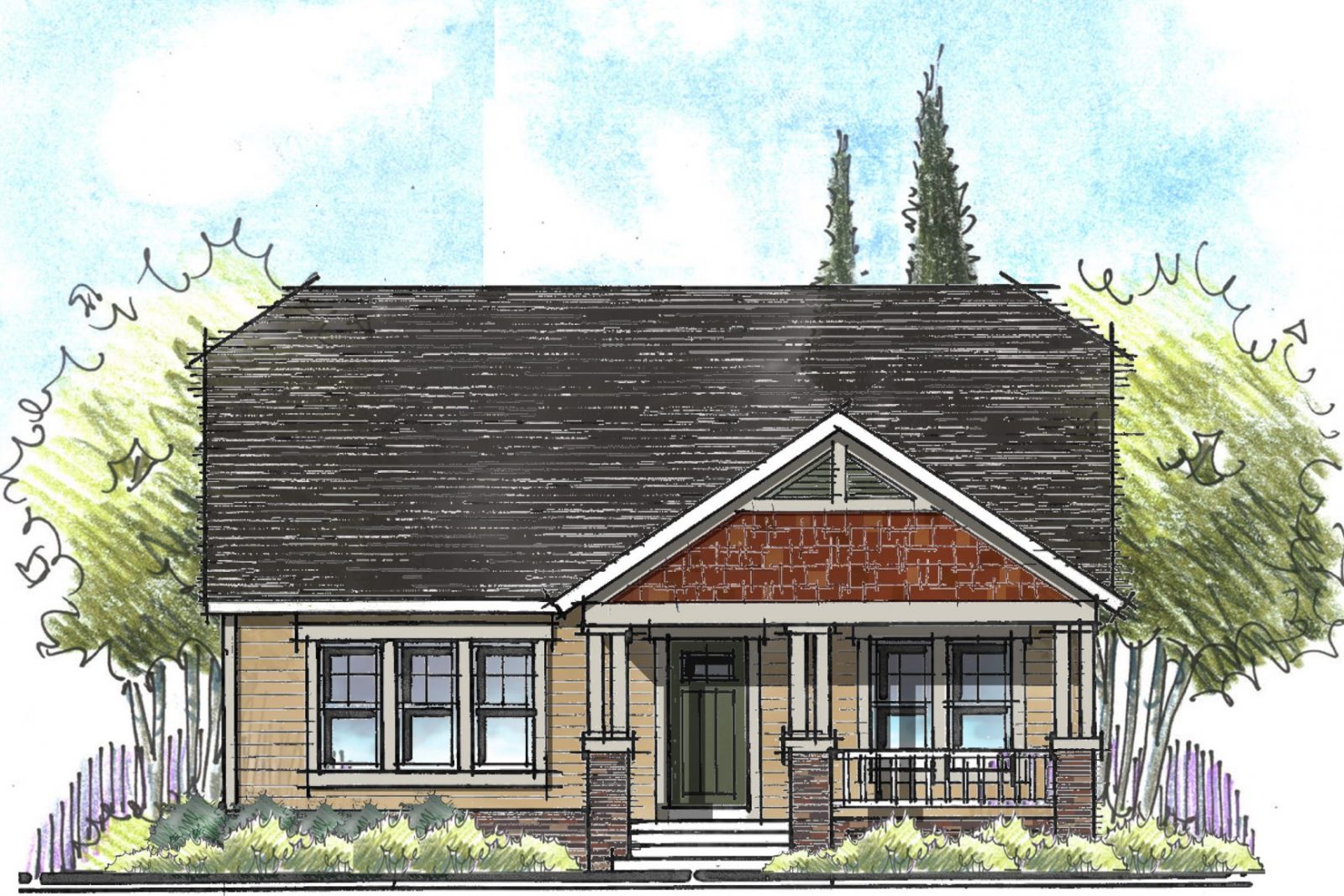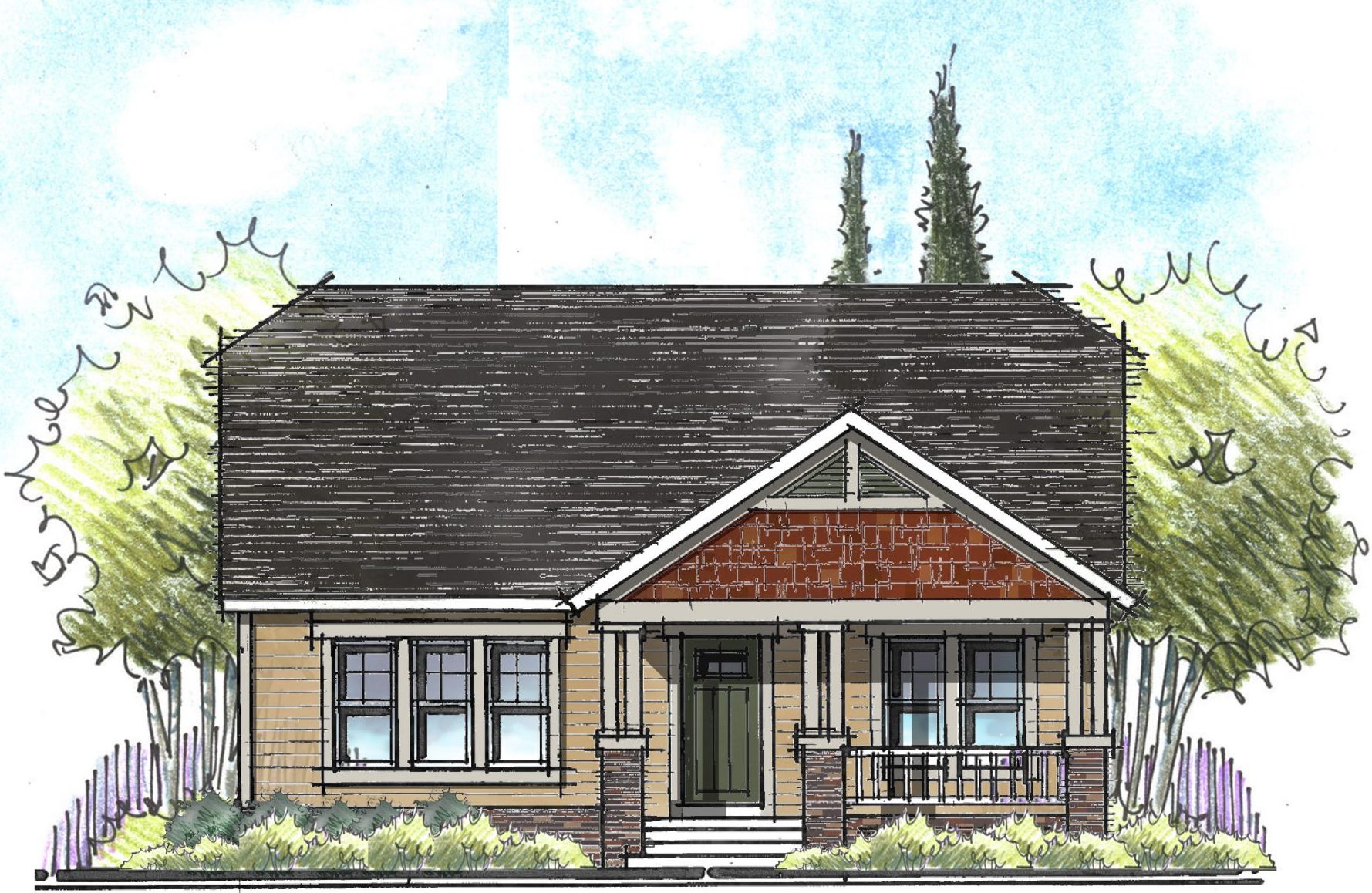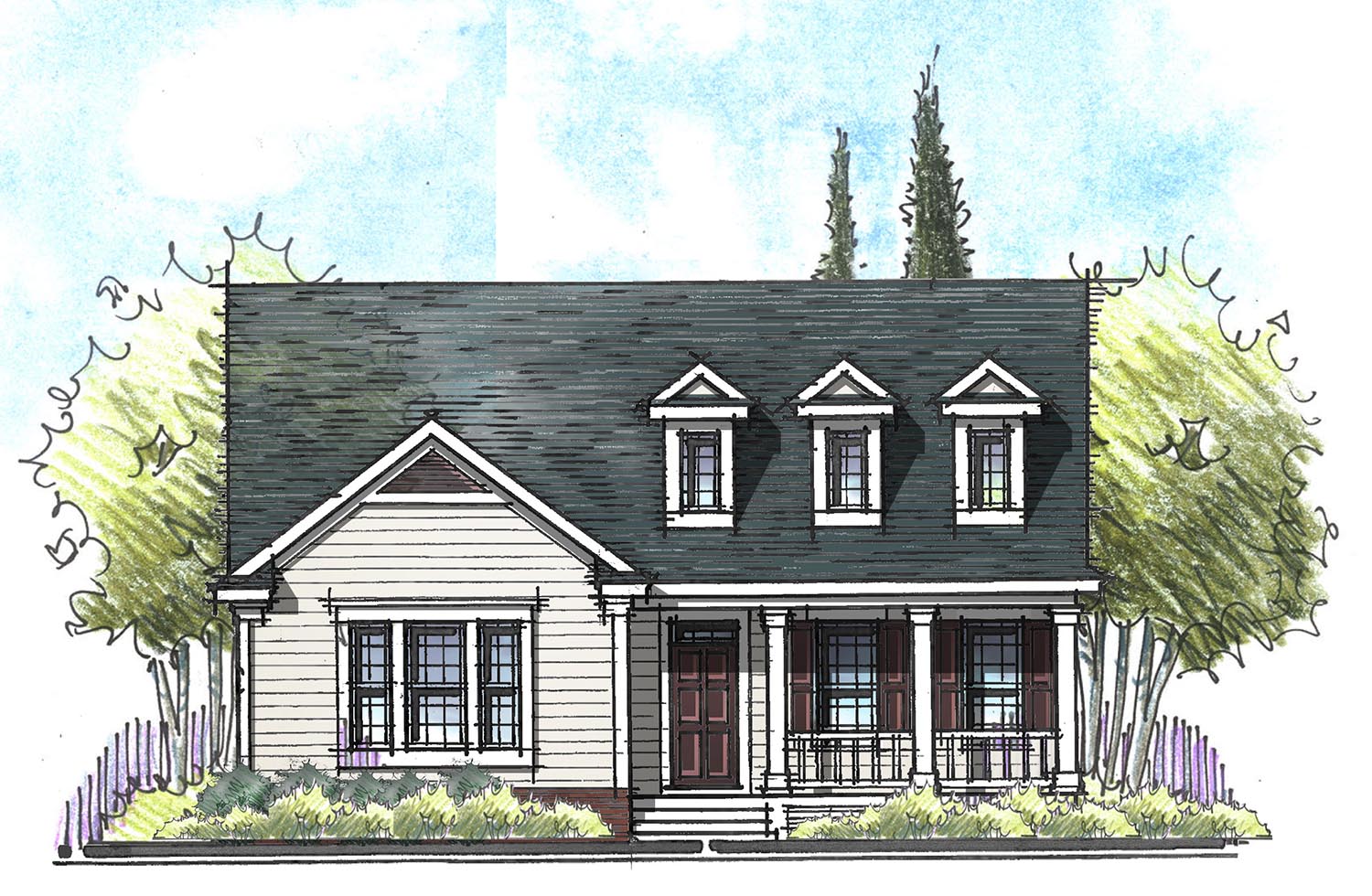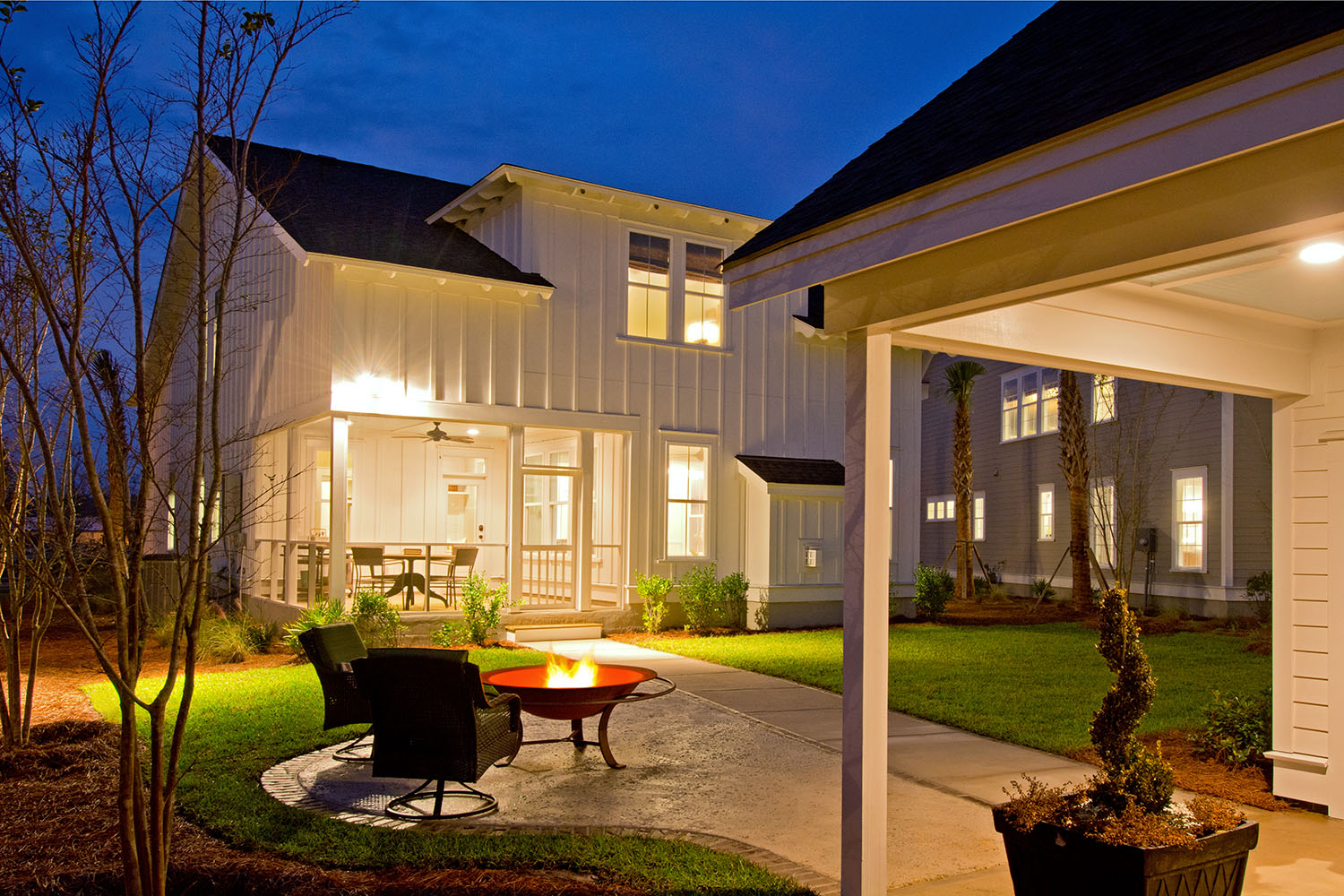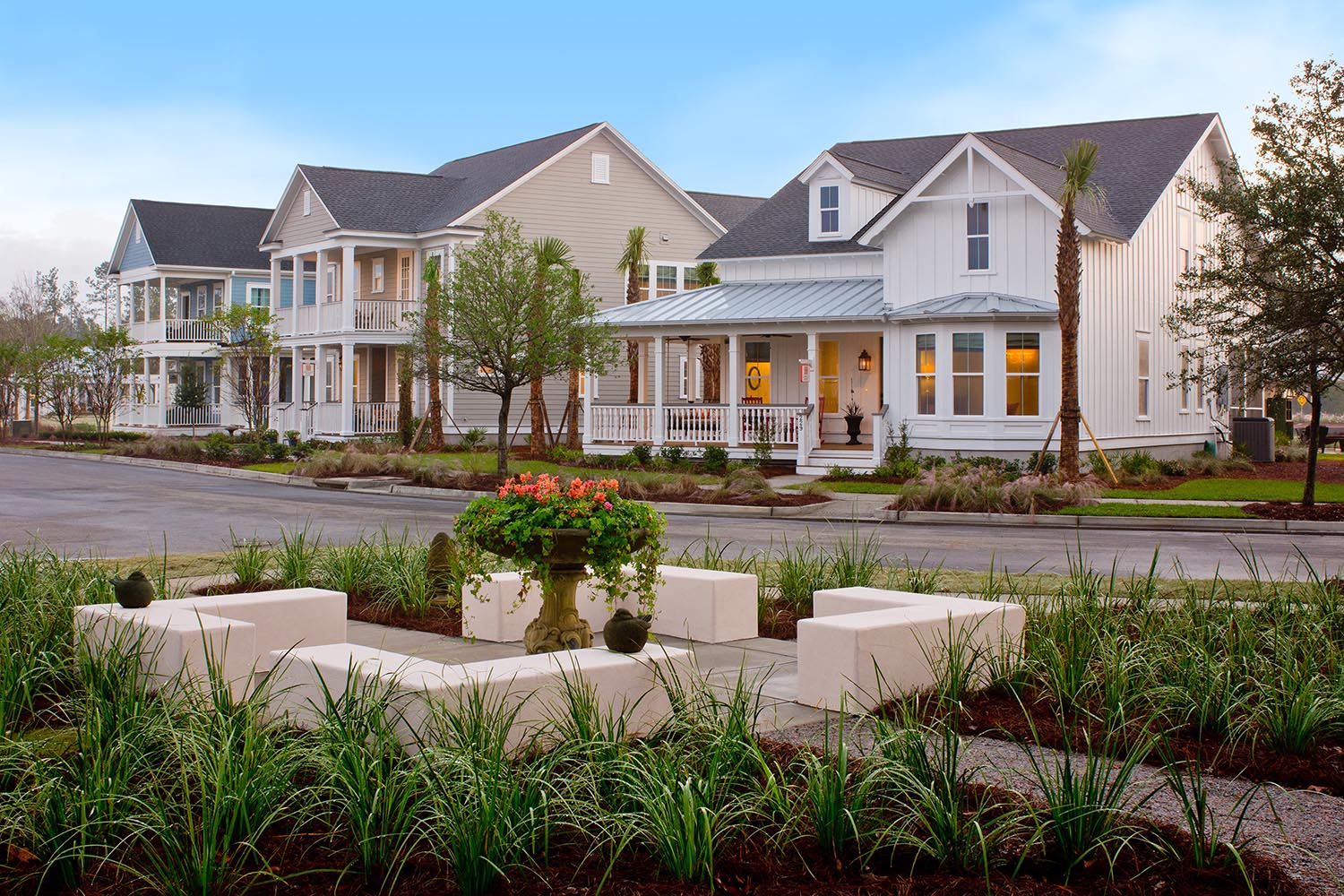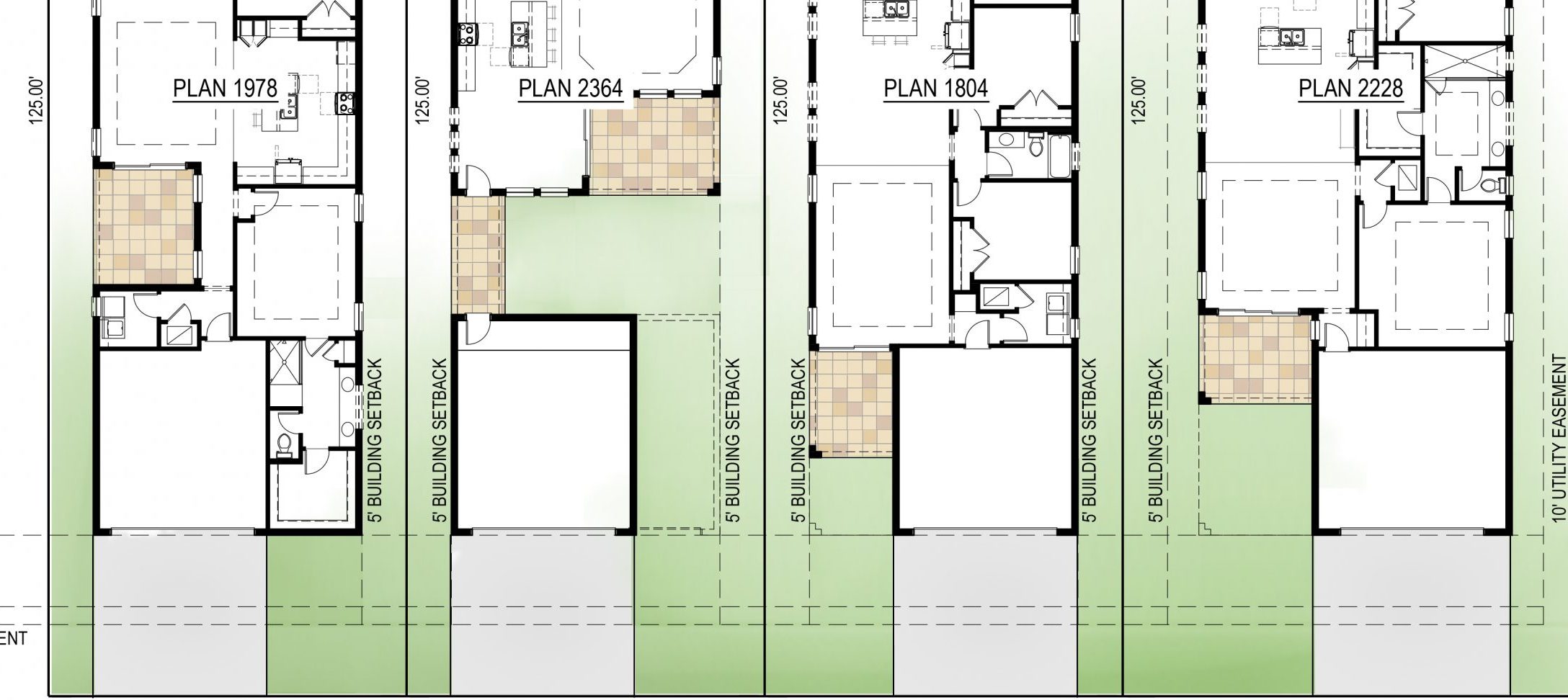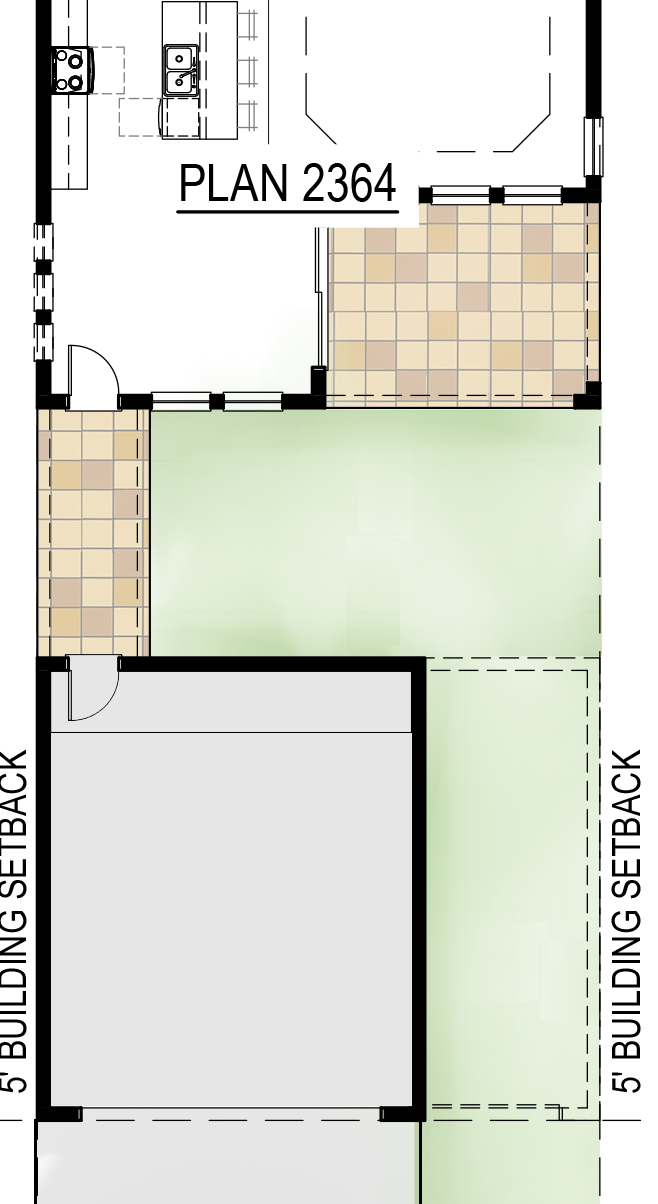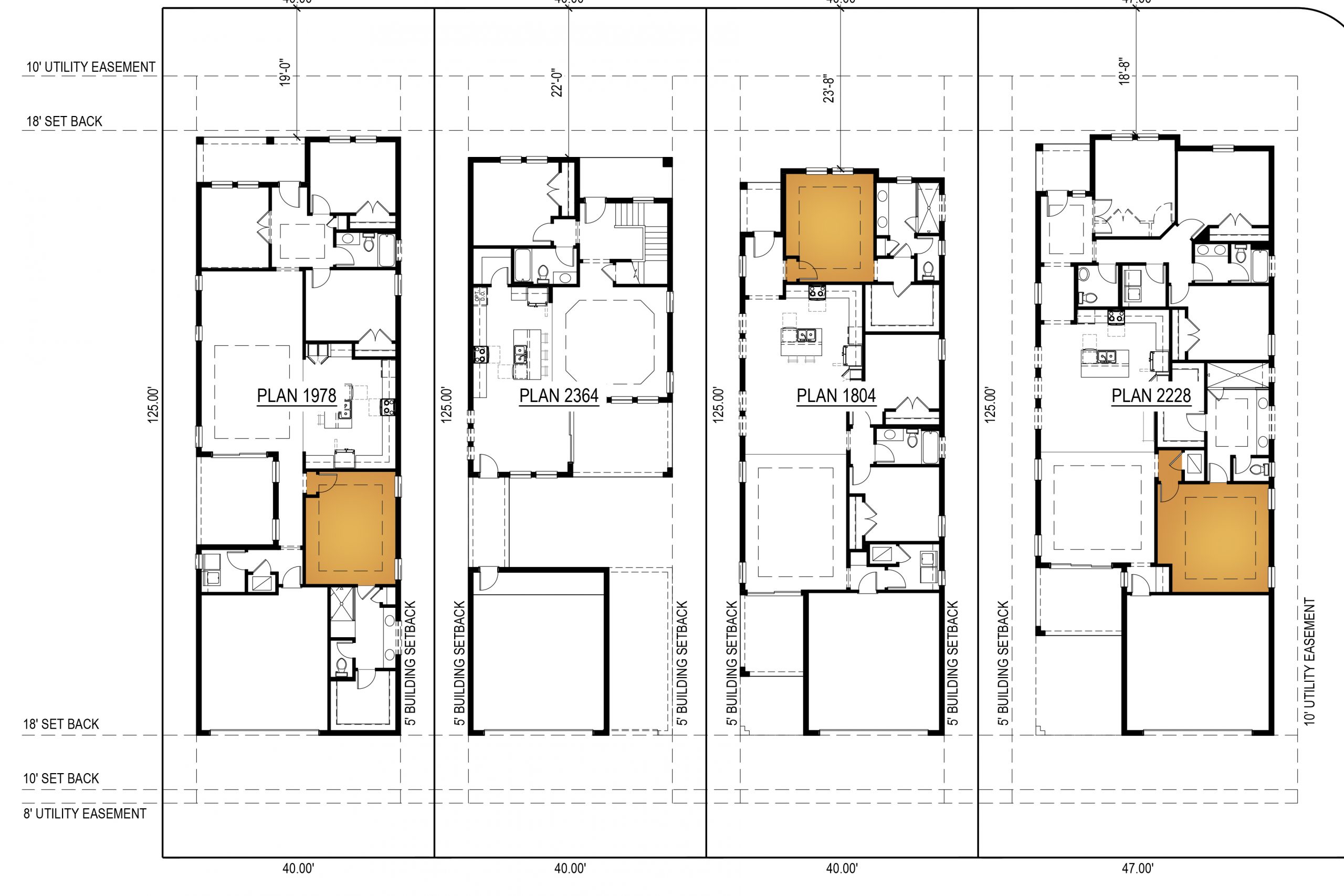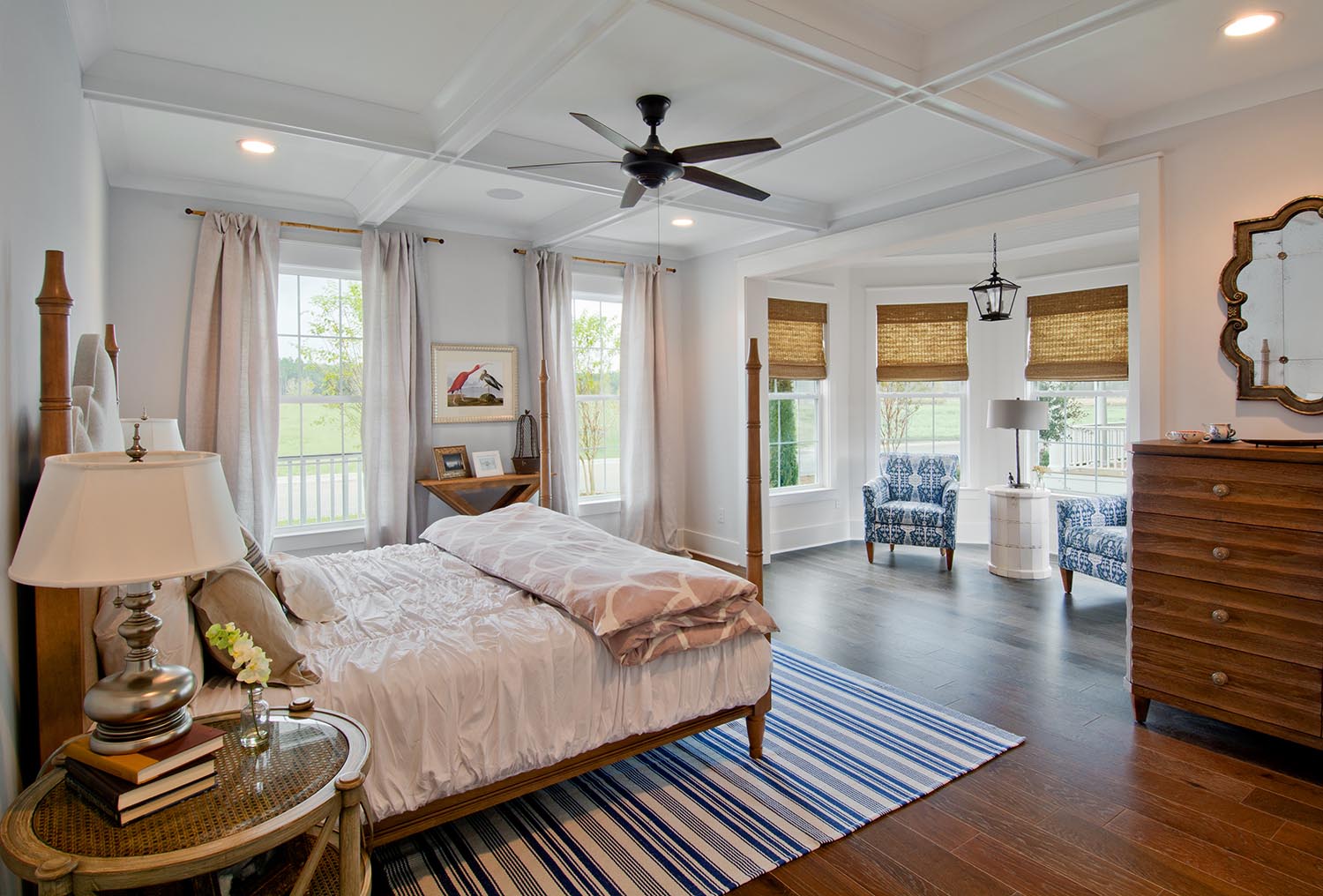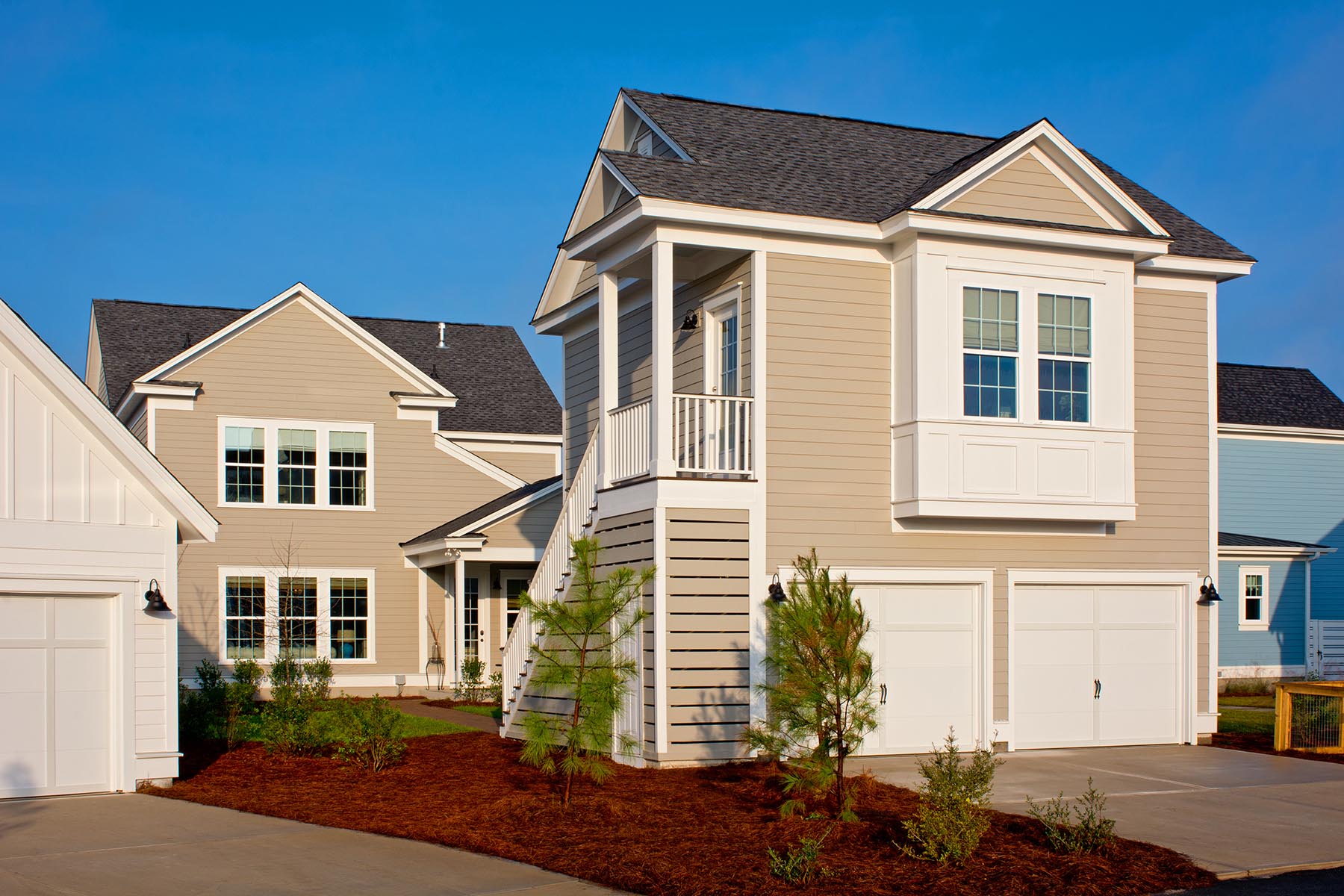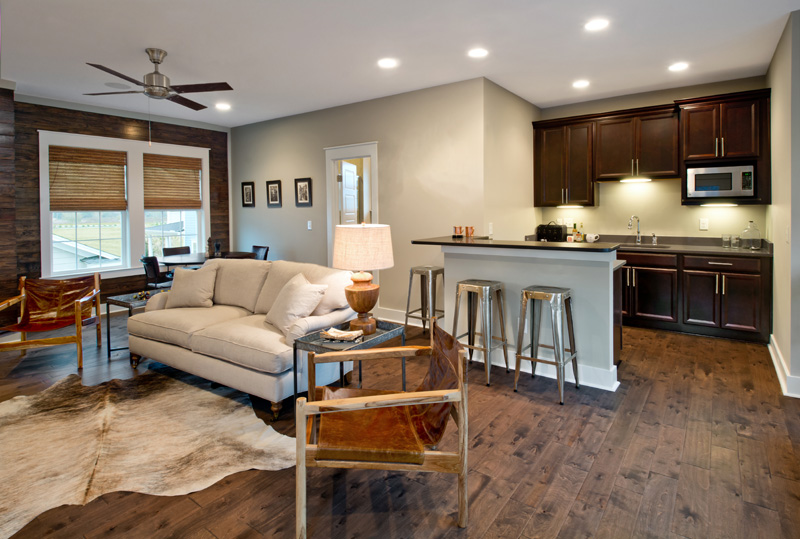A builder recently reached out about a new opportunity for some alley loaded homes. They had not designed or built any before, so he was a little apprehensive. What are the key design points, what to do, or what not to do?
His caution was well founded, as alley loaded plans can be tricky. Another less cautious builder asked if we could just take a front-loaded plan and flip around to be an alley loaded plan. For those wondering, the answer is a firm-but-polite “NO!”
Alley-loaded plans are coveted largely because they create a beautiful streetscape. Without the big ugly garage, houses can nestle up to the sidewalk with front porches conversational distance away. Alleys are often a great solution when trying to achieve higher density as narrower building footprints lend themselves to alleys.
Here are some keys things to consider when designing alley loaded product.
• Private Outdoor Space
• Build To Line
• Egress from the garage
• Location of the master suite
• 3 Car Garages
• Finished Room Over the Garage
• Where’s the water heater?
Private Outdoor Space
This can be a challenge. City planners want us all to live on our front porches – unless of course you want to put a grill there. I once had a client who said he likes to sit outside in his sleeveless T-shirt and drink beer from a can. He thought the neighbors would prefer he use his back porch for that. Of course, outdoor living is a huge selling point, so it is important to carve out both covered and uncovered space in the back that is shielded from the alley. Outdoor living in a ranch plan is especially challenging, but worth the effort – especially if you want to attract 55+ buyers.
Build To Line
Many alley loaded communities require a front “build to line” or zone. This is to ensure the houses hug the sidewalk for a friendly streetscape. With a build to zone from 18’ to 24’, you get “bounce” and animation in your streetscape.
Sounds easy enough, until you think about the length of the lot. Say you have a 130’ long lot and 60’ long two-story home including front porch and garage. The build to line is 20’ on the front. The quick math (130’ – 20’ – 60’) tells us the back of the garage, if attached, is 50’ from the alley. That’s a long driveway and not a great use of the backyard. In that case, you would detach the garage. On the plus side, the detached garage provides backyard privacy from the road. On the negative side, it can be a long hike in the rain with groceries.
Egress from the Garage
As just described, access from the garage may be difficult in an alley loaded house. Ideally, you want to arrive inside the home for convenience, inclement weather, and security. When the garage is detached, you could add a breezeway to add shade and protection from rain – unless it’s one of those sideways rain showers. And breezeways are cheap both because of lumber cost but also because of uplift. For security, you could fence the yard. Then hopefully locate the kitchen closest to the garage.
Ranch plans can still offer the opportunity to enter the home directly from the garage. If the owner’s bedroom is forward, you might be entering at the kitchen – perfect for the grocery getter. It is still important to try to create a welcome home valet for alley plans too.
Location of the Owner’s Suite
Houses with garages on the front almost always have the master on the rear with windows looking to the backyard. This doesn’t always happen in an alley loaded house unless the master is on the second floor. The location of the owner’s suite depends upon the width of the home. In a narrower plan, say 30’, there is very little “view” opportunity out the back because of the garage. Instead, this is normally where you will find the great room. The master may still be at the rear of the home, but with windows opening to the side yard.
Another location to consider is front of the house. Why not add elegant glass doors to access the front porch or add a nice bay windowed sitting area? One challenge with the master-forward is privacy from the foyer. Be sure to add a vestibule so guests aren’t looking into bedroom.
3 Car Garages
Oversized and three car garages are still gaining in popularity. But three car garages in alley loaded projects can be a challenge – especially in ranch and master down plans – depending upon the lot width. If you, like most homeowners, use your garage for non-car storage, parking can become a challenge. Some alley loaded communities require garages to be just 5’ from the edge of the alley. Therefore, parking cars in the driveway is not an option. Carving out storage in the rest of the house may be key – or simply design a garage that will fit two large cars and two oversized garbage cans.
Finished Room Over the Garage
The FROG, as it is affectionately called in some markets, is very common in alley loaded communities. It could be utilized as a guest suite, but it also makes a great work from home space. Some communities will even let you rent out your FROG – but check first.
Where Is The Water Heater?
The water heater is always in the garage, right? Not if the garage is detached. In that case, you need to find an alternative. In warmer climates that offer natural gas, an on-demand water heater can be mounted on the outside of the home. Not the case for cooler climates. Finding a conditioned space inside the home that won’t be destroyed when the water heat leaks is a concern.
Thoughtful design is always important, and alley loaded plans may take a little more thought if you’ve never tackled them. I hope you found this blog helpful. If that’s the case, shoot me an email.
Categorized in: Community Design, Exterior Styles
This post was written by Housing Design Matters


